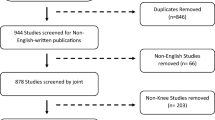Summary
A prospective study was carried out to test the sensitivity and specificity of stress radiography in detecting anterior cruciate ligament deficiency in both knees of 116 patients using the Telos device. In 47 of these a total or partial rupture of the anterior cruciate ligament was diagnosed by arthroscopy, while the ligament was intact in the remaining 69 patients. The mean difference in radiological translation between the injured and the normal knee was greater than 5 mm (p<0.001) in those with anterior cruciate deficiency, and less than 3 mm in the others. A differential displacement of up to 3 mm was considered normal. The sensitivity of the method was less than 67% and the specificity was 100%. Clinical diagnosis had a sensitivity of 70.2% and a specificity of 98.5%. Our findings suggest that, although a differential translation of more than 3 mm can be diagnostic, smaller differences do not rule out anterior cruciate deficiency.
Résumé
Les auteurs ont réalisé une étude prospective pour évaluer la sensibilité et la spécificité des radiographies en position forcée dans le diagnostic des insuffisances du ligament croisé antérieur (LCA). Une radiographie en tiroir forcé des deux genoux a d'abord été faite, en utilisant l'appareil Telos, chez 116 patients devant subir une arthroscopie unilatérale. Chez 47 de ces patients une rupture totale ou partielle du LCA a été confirmée par arthroscopie, qui a montrée un ligament intact chez les 69 autres. La différence moyenne de translation entre le genou blessé et le genou sain a été supérieure à 5 mm (p<0.001) chez les patients ayant une insuffisance du LCA et inférieure à 3 mm chez les autres (une différence de 3 mm a été considérée comme normale). La sensibilité de la méthode a été de moins de 67% et le spécificité de 100%. L'examen clinique a une sensibilité de 70.2% et une spécificité de 98.5%. Ces résultats permettent de penser que, bien qu'une translation supérieure à 3 mm puisse avoir une valeur diagnostique, une moindre différence n'exclut pas une insuffisance du ligament croisé antérieur.
Similar content being viewed by others
References
Anderson A, Snyder R, Federspiel C, Lipscomb B (1992) Instrumented evaluation of knee laxity: a comparison of five arthrometers. Am J Sport Med 20: 135–140
Daniel D, Stone M (1990) Instrumented measurement of knee motion. In: Daniel D, Akelson W, O'Connor J (eds) Knee ligaments: structure, function, injury and repair. Raven Press, New York
Daniel D, Malcolm L, Lose G, Stone M, Sachs R, Burks R (1985) Instrumented measurement of anterior laxity of the knee. J Bone Joint Surg [Am] 67: 720–726
Franklin J, Rosenberg T, Paulos L, France P (1991) Radiographic assessment of instability of the knee due to rupture of the anterior cruciate ligament. J Bone Joint Surg [Am] 73: 365–372
Hooper G (1986) Radiological assessment of anterior cruciate ligament deficiency. J Bone Joint Surg [Br] 68: 292–296
Iversen B, Stürup J, Jacobsen K, Andersen J (1989) Implications of muscular defense in testing for the anterior drawer sign in the knee. Am J Sports Med 17: 409–413
Jakobsen K (1976) Stress radiographical measurement of anteroposterior, medial and lateral stability of the knee joint. Acta Orthop Scand 47: 335–344
Lerat J, Moyen B, Jenny J, Perrier J (1993) A comparison of pre-operative evaluation of anterior knee laxity by dynamic X-rays and by the arthrometer KT 100. Knee Surg Sports Traumatol Arthroscopy 1: 54–59
Markolf K, Mensch J, Amstutz H (1976) Stiffness and laxity of the knee — the contributions of the supporting structures: a quantitative in vitro study. J Bone Joint Surg [Am] 58: 583–594
Markolf K, Kochan A, Amstutz H (1984) Measurement of knee stiffness and laxity in patients with documented absence of the anterior cruciate ligament. J Bone Joint Surg [Am] 66: 242–253
Oberlander M, Shalvoy R, Hughston J (1993) The accuracy of the clinical knee examination documented by arthroscopy: a prospective study. Am J Sports Med 21: 773–778
Shino K, Inoue M, Horibe S, Nakamur H, Ono K (1987) Measurement of anterior instability of the knee. J Bone Joint Surg [Br] 69: 608–613
Stäubli HU (1990) Stress radiography. In: Daniel D, Akelson W, O'Connor J (eds) Knee ligaments: structure, function, injury and repair. Raven Press, New York
Stäubli HU, Jakob R (1991) Knee symposium. Anterior knee motion analysis: measurement and simultaneous radiography. Am J Sport Med 19: 172–177
Stäubli H, Noesberger B, Jakob R (1992) Stress radiography of the knee. Acta Orthop Scand 63: 1–27
Torzilli P, Greenberg R, Hood R, Pavlov H, Insall J (1984) Measurement of anterior-posterior motion of the knee in injured patients using a biomechanical stress technique. J Bone Joint Surg [Am] 66: 1438–1442
Author information
Authors and Affiliations
Rights and permissions
About this article
Cite this article
Garcés, G.L., Perdomo, E., Guerra, A. et al. Stress radiography in the diagnosis of anterior cruciate ligament deficiency. International Orthopaedics 19, 86–88 (1995). https://doi.org/10.1007/BF00179966
Accepted:
Issue Date:
DOI: https://doi.org/10.1007/BF00179966




